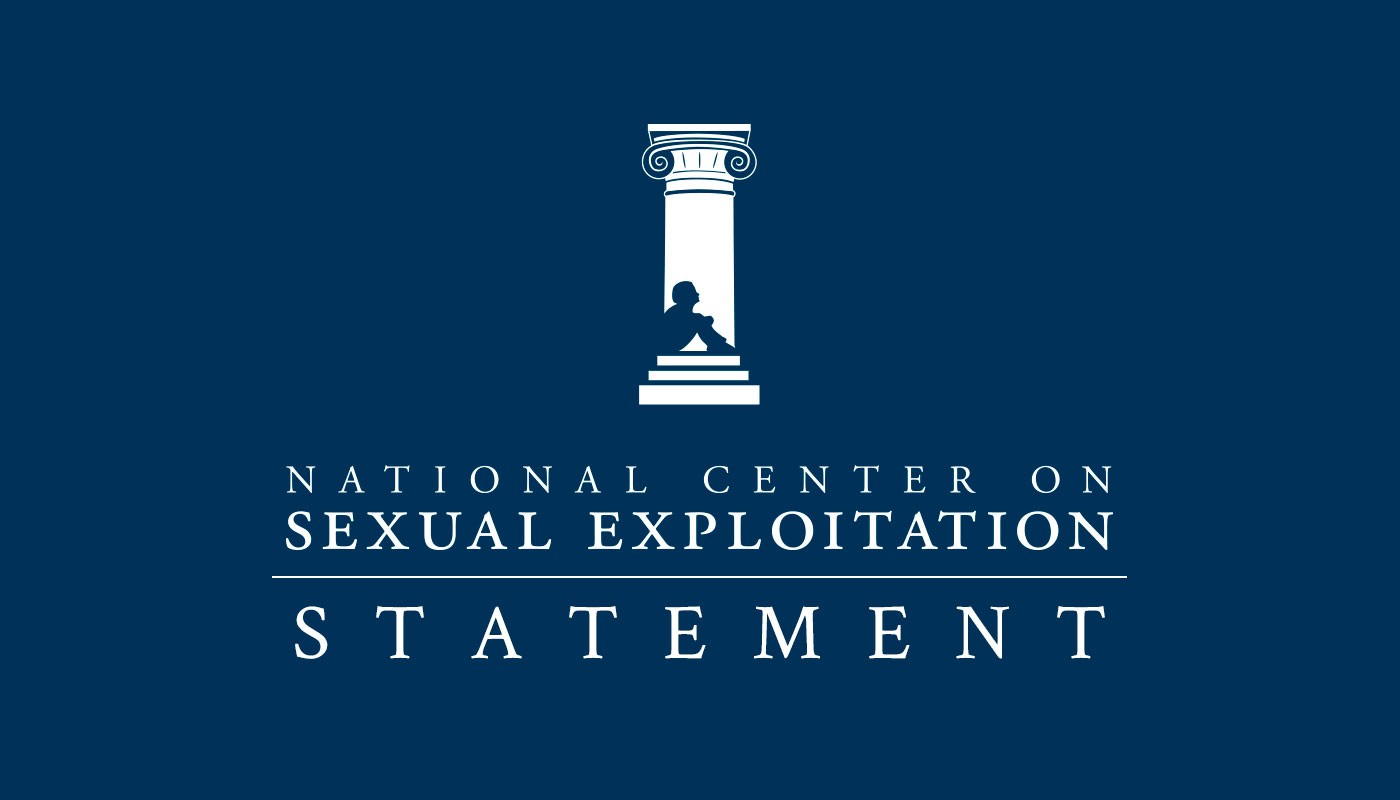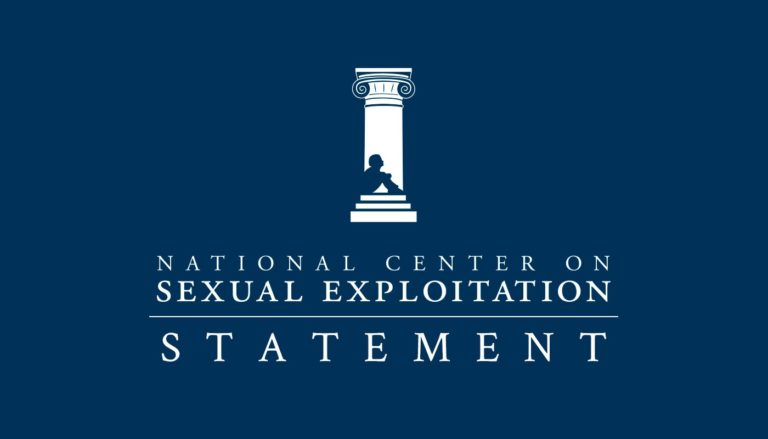NEWS RELEASE from MORALITY IN MEDIA, Inc.
NEW YORK (Jan. 28, 2009) – Last Wednesday, the Supreme Court announced that it would not review a decision by the U.S. Court of Appeals in Philadelphia invalidating the Child Online Protection Act. COPA would have required websites that commercially distribute pornography to take reasonable steps to keep minors (defined as children under 17) away from the smut.
Morality in Media president Robert Peters had the following comments.
Thanks to the federal courts in Philadelphia and the U.S. Supreme Court, more than a decade has now passed since Congress first enacted laws to protect children from Internet pornography, and there are still no enforceable laws that require persons who commercially distribute pornography on the Internet to take reasonable steps to restrict children’s access to that material.
Today, if a child were to walk into an “adult bookstore,” he or she would be told to leave, because it is against the law to sell pornography to children in real space. But if that same child were to “click” to most commercial websites that distribute hardcore pornography, he or she could view pornography free of charge and without restriction, because when it comes to cyberspace, the federal courts think parental use of filters is an adequate solution to the problem.
Parental use of filtering and monitoring technology on computers under their control should be the “first line of defense” when it comes to protecting children from Internet pornography. But for any number of reasons, many parents will not use such technology. While it may come as a surprise to some federal judges, many parents are:
- Overburdened and exhausted
- Naïve or too trusting
- Fearful of being too strict or of upsetting their children
- Concerned about filters blocking legitimate websites
- Technologically challenged or unable to afford technology
- Unable to speak or read English
- Physically or mentally disabled
- Abusive or neglectful of their children
In response to these concerns, the U.S. Court of Appeals in Philadelphia wrote:
“[T]he Government made much of a study that found that only 54 % of parents use filters…But the Government has neglected the fact that this figure represents a 65 % increase from a prior study done four years earlier, which indicates that significantly more families are using filters… Furthermore, the circumstance that some parents choose not to use filters does not mean that filters are not an effective alternative to COPA. Though we recognize that some of those parents may be indifferent to what their children see, others may have decided to use other methods to protect their children — such as by placing the family computer in the living room… — or trust that their children will voluntarily avoid harmful material on the Internet…”
Perhaps the Court of Appeals judges were ignorant of a study showing that while the percentage of parents who said they utilized filtering software did rise significantly in recent years, so did the percentages of children who said they were exposed to unwanted pornography or who said they went to an X-rated site on purpose. See, J. Wolak, K. Mitchell & D. Finkelhor, “Online Victimization of Youth: Five Years Later,” Natl. Center for Missing & Exploited Children, 2006.
Furthermore, according to the most recent survey that I am aware of (“Parents, Children & Media,” Kaiser Family Foundation, June 2007), only 41% of parents said that they “use parental controls to block their children’s access to certain websites,” despite the fact that for more than a decade government agencies (including schools), media outlets, online services, filter technology companies, and nonprofits have vigorously promoted parental use of filters.
And children in large numbers have been exposed to Internet pornography, as another recent study shows. See, C. Sabina, J. Wolak & D. Finkelhor, “The Nature and Dynamics of Internet Pornography Exposure for Youth,” CyberPsychology & Behavior, 2008 (“Overall, 72% of participants (93.2% of boys, 61.1% of girls) had seen online pornography before age 18…Most exposure began when youth were ages 14 to 17, and boys were significantly more likely to view online pornography more often and to view more types of images…”).
Quite incredibly, the Court of Appeals judges ignored the reality that as children get older they can access the Internet outside the home (e.g., at a school, library, friend or relative’s house or a job). Increasingly, children can also access the Internet via mobile devices, and all it takes is one child in a group of friends to have unrestricted access to the Internet for all to have access.
In turning a blind eye towards the fact that many parents do not use filters and that children can access the Internet on computers that are not under parental control, these judges also ignored the Supreme Court’s holding in Ginsberg v. New York, 390 U.S., at 639, where the Court stated:
“‘While the supervision of children’s reading may best be left to their parents, the knowledge that parental control or guidance cannot always be provided and society’s transcendent interest in protecting the welfare of children justify reasonable regulation of the sale of material to them. It is, therefore, altogether fitting and proper for a state to include in a statute designed to regulate the sale of pornography to children special standards, broader than those embodied in legislation aimed at controlling dissemination of such material to adults.’” [Italics added]
It is also clear from the Court of Appeals decision that the judges were more concerned about the burden that implementation of an age verification system would have on pornography distributors (financial costs) and potential users (anonymity concerns) than they were about the impact on children of exposure to pornography that depicts, among other things, “barely legal” teens, bestiality, bondage, flogging, gangbangs, “golden showers” (urine), group sex, incest, marital infidelity, prostitution, rape, “scat” (feces), torture, and unsafe sex galore.
The Court of Appeals judges were unwilling to construe the law to avoid perceived constitutional problems (e.g., to apply only to for-profit enterprises). See, e.g., Ashcroft v. Free Speech Coalition, 535 U.S., at 268 (Rehnquist, J., with whom Scalia, J. joined in part, dissenting)(“We normally do not strike down a statute on First Amendment grounds ‘when a limiting instruction…could be placed on the challenged statute.’”).
By determining that the “taken as a whole” requirement of the law is unconstitutionally vague, the Court of Appeals ignored the history of the “taken as a whole” concept, which was first introduced by Judge Hand of the U.S. Court of Appeals in Manhattan in the 1934 Ulysses case and became part of the Supreme Court’s “adult” obscenity definition in the 1966 Memoirs case. In the 1972 Kois case, the Supreme Court provided guidance as to how the “taken a whole” requirement could be applied to mediums other than a book or film. The Philadelphia judges also ignored the recent Williams case, which stated (128 S. Ct., at 1845): “perfect clarity and precise guidance have never been required even of regulations that restrict expressive activity.”
Much more could be said about the COPA litigation in Philadelphia, including the judges’ handling of the foreign-based website problem and the facts that COPA would not have applied to all Internet “modalities” and that age verification technology isn’t perfect. Suffice it to say, for purposes of these comments, that in my opinion it is no coincidence that pornography defenders have in recent years chosen the Third Circuit to challenge four federal laws intended to protect children from smut. Third Circuit judges determined that all four were unconstitutional.
In fairness to the Philadelphia judges, however, the buck must stop at the U.S. Supreme Court.
The Supreme Court’s penchant for striking down laws intended to protect children from speech that is harmful to children and unprotected by the First Amendment for children began in earnest in the 1997 Reno v. ACLU case, where the Court invalidated a law intended to restrict children’s access to “indecent” content disseminated on the Internet. In retrospect, I think Congress was unwise to attempt to regulate indecency on the entire Internet, but the Supreme Court was also unwise in assuming that parental use of filters would protect children from Internet smut.
In Reno, the Court was willing to put its trust in filters even before there was clear proof that they would be effective (“the evidence indicates that ‘a reasonably effective method by which parents can prevent their children from accessing sexually explicit and other material which parents may believe is inappropriate for their children will soon be available.’” 521 U.S., at 855).
But the deathblow to children’s wellbeing came in the 2000 U.S. v. Playboy case, where the Supreme Court invalidated a needed and reasonable law that would have required cable TV operators to completely scramble signals for pay pornography channels, so that the signals would not bleed into homes of non-subscribers, or wait until 10 pm before airing the smut.
In applying “strict scrutiny” to this law, the Playboy Court ignored prior case law and in effect held that with the exception of broadcast TV, it is OK to expose children to pornography as long as parents have a means to plug up the smut, either before or after their children’s exposure, even if many don’t use that means for one reason or another, including failure to discover the problem.
In applying “strict scrutiny” to a law intended to restrict children’s access to harmful content that is not constitutionally protected for children, because the law incidentally burdened adult access to that content, thePlayboy Court did for the protection of children from pornography what the Memoirs Court did for the protection of society from obscene materials in 1966. It brought protection to an end, for as the Court said in the Playboy case, “[i]t is rare that a regulation restricting speech because of its content will ever be permissible.” [529 U.S., at 818]
In the COPA litigation, the Supreme Court again applied “strict scrutiny” to a law intended to restrict children’s access to content that is harmful to children and that is not protected speech for children, because that law incidentally burdened adult access to the content.
The Court’s COPA analysis would have made sense if the Government had a choice between two means, each of which could achievethe legitimate purpose of protecting children from Internet smut, one of which was less restrictive of First Amendment rights than the other.
But the reality is that there is no one solution to protecting children from Internet smut, and just about everyone seems to understand that, except for ACLU lawyers and their expert witnesses and federal court judges in Philadelphia and Washington, DC.
Some societal problems do not permit any feasible either-or choice to achieve the governmental purpose. For example, to protect children from online sexual exploitation, parental involvement, technology, schools, nonprofit organizations, and laws are all needed. Now, Internet service providers, credit card companies, and banks are also cooperating with this effort.
And to protect children from Internet pornography, parents, technology, schools, nonprofit organizations, online services and laws will also be necessary.
By invalidating reasonable and necessary laws intended to protect children from Internet pornography, the Court has turned a deaf ear to the warning enunciated in Columbia Broadcasting System v. Democratic National Committee, 412 U.S., at 103-104:
“[I]n evaluating the First Amendment claims . . . we must afford great weight to the decisions of Congress . . . . Professor Chafee aptly observed: ‘Once we get away from the bare words of the Amendment, we must construe it as part of a Constitution which creates a government for the purpose of performing several very important tasks. The Amendment should be interpreted so as to not cripple the regular work of government.’”
Our nation’s founding fathers viewed the First Amendment within a framework of ordered liberty, not as a license to sell smut without any legal obligation to restrict children’s access. In the COPA litigation, the Supreme Court has done this nation a disservice.
Author: Robert Peters 01/28/2009



